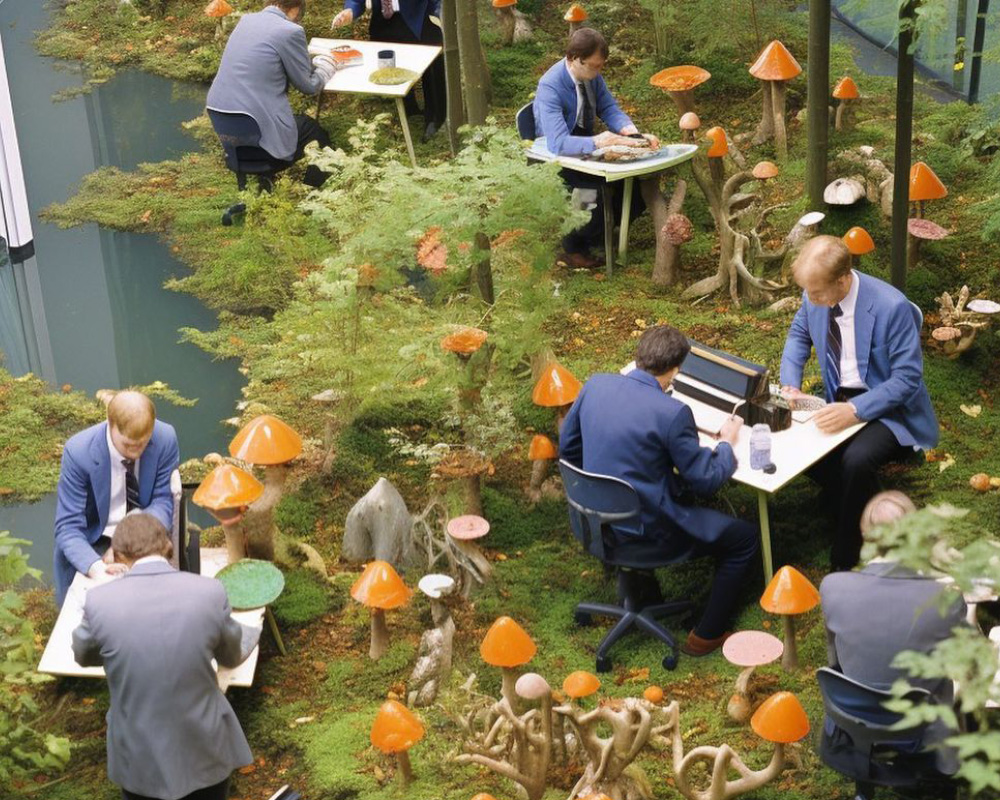What do you want to become later? It’s a question we all face at some point. But what if the future is now? Suddenly, it’s not just about what you want to become; it’s about where you want to work. The countless career choices is staggering, and the fascinating part? Companies are going all out, offering vacations, bonuses, cars, and who knows what else for secondary employment benefits, all in the pursuit of attracting and retaining fresh talent.
This approach stems from the dynamics of supply and demand. The demand for young talent has skyrocketed to the point where it’s causing a real labor crisis. Countries like Japan, Germany, Taiwan, and Hong Kong, struggling with aging populations, are experiencing colossal challenges. Yet, this crisis extends far beyond, touching almost every corner of the globe, creating a pervasive shortage of skilled personnel.
While talent shortage has always been an issue, the severity in 2024 is quite something else. To put it in perspective, in 2015, 38% of companies dealt with a talent shortage. Fast forward to today, and according to the Manpowergroup, almost 80% of employers are wrestling with the challenge of finding the right personnel.

The impact is felt not just in major corporations but also in medium to small businesses. Interestingly, it’s the giant enterprises that suffer most. Typically housing an older workforce with numerous senior positions, these companies face a real void if they can’t secure young talent. The big fishes that are listed on the stock exchange are built from the capitalist paradigm. If shareholders cannot take their profits, they exit with all the consequences on the board.
Here in the Netherlands, staff shortage takes the top spot as the primary obstacle to business growth. Sectors like retail and hospitality are particularly hard-hit. The scarcity of talent naturally cascades into increased pressure on the existing workforce. People find themselves shouldering more responsibilities, working longer hours, and it’s taking a toll on morale. In industries like retail and hospitality, where the workforce is often comprised of the younger generation, the situation increases an already existing challenge: the omnipresent struggle with mental health issues and burnout symptoms among the youth, as previously highlighted in our Observatory. Not exactly an encouraging scenario.

The causes of talent shortages
Falling into the trenches of the problem, we discover numerous factors that not only caused it but are also making it worse. Let’s see where the roots of this issue lie:
Tech Overdrive – The breakneck speed at which technology is shooting forward is insane. Every sunrise brings forth new innovations, a collaboration between human and machine. The hunger for individuals proficient in handling technical tools, code, and mastering tools in the realm of AI has reached it’s peak.
Educational Mismatch – There’s a noticeable dissonance between the theoretical wisdom imparted and the practical demands of the real world. Consider the wave of technology we just discussed. Schools, either struggling to keep pace or marked by conservative approaches, often fail to adapt their curriculum, resulting an underdeveloped workforce into the market.
Demographic Gap – Also highlighted, economic powerhouses are struggling with an aging population, leaving a void in essential roles. The reality is that they can find too little talent ready to fill crucial positions, posing a significant problem for Generation Alpha. The transition is barely there. You’re witnessing a true generation gap unfold when you take a peek at who’s entering the market and realise that sooner or later, they’ll need to be stepping into those senior roles. More on this in our comprehensive report on Generation Alpha.
Global Talent Quandary – Another big facet of this marsh is that the talent is actually available; it’s just more prevalent in the second and third-world countries worldwide. Take India, for instance, filled with young talent armed with the hard skills needed to tackle the technological challenges faced by aging nations. Ignoring the issue won’t solve anything, a true migration of talent might be the solution for economies teetering on the edge. Or take the alternative route, dividing and building your company in countries where talent is readily available. We know, easier said then done.
Soft Skills Shortage – Employers attribute the talent shortage to a perceived lack of soft skills in the next generation. The five critical skills they feel are deficient are:
- Self-Discipline
- Creativity & originality
- Critical thinking & analysis
- Reasoning & problem-solving
- Resilience & adaptability

In this blameless game, employers argue the next generation lacks discipline, while the next generation end contends that organisations are too old-school and resistant to innovation. It’s actually pretty much a polarised sight, and we believe the truth lies somewhere in the middle.
It’s apparent that the next generation is discerning and critical of their (future) employers. If the entire package doesn’t align, the chances of them signing up are minimal. A significant obstacle for the next generation is the insistence on a traditional five-day office work week, seen as a direct threat to the balance between work and personal life.
Furthermore, five important factors for the next generation:
- A substantial salary
- Meaningful work
- Opportunities for development and growth
- An appealing workplace ambiance
- Minimal commuting time

The first one often becomes a bottleneck for many employers who argue that young people demand significant starting salaries. The reality tells another story. Considering the skyrocketing costs of education, not to mention housing, groceries, and transportation, life, in general, has become considerably more expensive over the last decade.
A painful consequence of this crisis is the approaching bursting of industries crucial for shaping our society, such as sports, communication, and culture. It’s alarming, primarily because the budgets and expectations brought forth by young talent are too high, and these industries find it hard to compete with corporate giants. This is especially intriguing as young people consistently express a desire to pursue creative or sports-related careers.

What can companies do to attract talent?
Let’s stay realistic. We don’t need to completely drown ourselves in pessimism, as there is so much within reach. Let’s explore the business perspective: what actions can they take to tap into the readily available talent pool?
In the open-door category, the first move is to embrace flexibility. Start by offering at least one work-from-home day and champion the new way of working: as long as the job gets done, does it really matter if you’re at the office or not? Be adaptable and let intrinsic motivation by flexibility take the lead.
Another key point is to ditch the insistence on a university degree. It’s evident that many talents, despite excelling in their studies, lack the practical skills needed in the field. Don’t shut the door on those without the outdated piece of paper. So, don’t close the door to talent that doesn’t possess this piece of paper. Disclaimer: this, of course, doesn’t apply to all industries.

Allowing someone to onboard, training them with the necessary tools, and giving them a fair chance can result in top players for your organisation. This is particularly pertinent for men, who are increasingly opting for fewer higher education degrees (Financial Times source).
Research indicates that over half of employers (55%) are open to hiring international talent. While a substantial number, this percentage doesn’t seem to expand in the short term. As we’ve highlighted earlier, this is a missed opportunity for larger companies. The Alpha generation is emerging globally, dreaming of opportunities in modern Western countries. Hiring internationally might become more relevant and likely when the need truly arises.
Consider this idea: if you can’t find the talents, outsource them. Collaborating with a consultancy firm or hiring a creative agency may incur costs, but the experience and efficiency gained are invaluable. These products and workflows are transferable, and within about five years, they won’t be needed anymore, having trained your staff to follow the systems.

Once again, Generation (Generation.org) emphasizes the importance of inclusivity and diversity for current and upcoming generations. Acknowledging that this is easier said than done, it’s a point that will undoubtedly climb higher in the hierarchy in the coming decade. Researching potential talent and hiring role models can be key factors in generating attraction.
Saving the most crucial advice for businesses towards the end of this chapter: what emerging talent truly seeks is to join a brand. A company with a name that commits to its unique way of operating as a community and lifestyle. In short: build a brand. Yes, it takes time, but invest in a recognizable and unique identity, and create a legacy that people know and have a positive image of. Let’s be honest: you’d prefer to work for a brand that is known and has a positive association, wouldn’t you?

Successful examples of companies that attract talent
PUMA
In the fierce battle against talent shortage that’s gripping Germany, Puma emerges as a strategic contender. If you’re still with us, you’ll tell us why Puma is hitting the nail on the head. They’re an international workforce that stands as a testament to diversity and innovation.
Puma’s headquarters host representatives from over 80 different nationalities, with a bold majority being non-German. For your idea, their HQ is located in Herzogenaurach (pop. ±23.000). That’s not as sexy as Paris, London, or Milan.
In Raconteur, Michael Knoess, the Head of Talent Acquisition at Puma, sheds light on the pivotal role played by genuine diversity. It’s not just about ticking boxes for gender or origin; it’s about cultivating a kaleidoscope of minds within the organisation. Puma’s workforce, a mirror reflecting the diverse needs of consumers across 120 countries, has given us remarkable product innovations. An illustrative example is the development of a hijab tailored for Moroccan footballer Nouhaila Benzina. Knoess underscores the strategic advantage of having a workforce attuned to the varied needs of a broad international market.
“When you talk about real diversity, it shouldn’t be a discussion of gender or origin. It’s more about diversity of minds.”
Puma’s success goes beyond just hiring talented individuals; it includes keeping those employees around. According to Knoess, who believes in prioritizing employee retention, the real challenge isn’t just getting foreign workers to join but making sure they stay committed to the company. Puma achieves this by creating a sense of belonging through various activities like sports, training sessions, music courses, and even cooking classes. These efforts are especially important for people coming to work at Puma from outside Germany, where they might not have a strong social network.
To address bigger challenges, Knoess recommends a diverse set of strategies. This includes encouraging longer working periods, using AI for automation, and finding ways to help women return to work after having a child. Puma’s innovative approach to finding and keeping talent isn’t just making it a leader in the industry; it’s also a source of inspiration for other businesses dealing with similar issues.

MOJO
Mojo stands out in the events industry, demonstrating excellence in every aspect of its operation, from booking and programming to the organization and production of concerts and festivals. With an impressive portfolio of around 200 concerts per year and the creation of renowned festivals like Pinkpop, Down the Rabbit Hole, Rolling Loud, North Sea Jazz, and Lowlands, Mojo has solidified its position as a leader in the field.
What sets Mojo apart is not just their festivals but also their significant role in organizing and booking other major events, contributing to their substantial influence in the industry. The company’s reputation for booking global stars and curating world-class lineups has elevated them to a prominent position in the European festival scene, where they manage the calendars and staff for numerous major events.
Mojo has boosted its resourcefulness by establishing its own temp agency (Mojo Concerts), showcasing a strategic approach to effectively meeting staffing needs. Mojo’s workforce is marked by diversity, youthfulness, and inclusivity, aligning seamlessly with the dynamic requirements of the creative, cultural, and sports industries. The company’s dedication to offering enticing secondary employment conditions, including complimentary festival tickets, adds an extra appeal for potential employees.
In essence, Mojo’s success in the events industry is a result of their extensive experience, a workforce that mirrors diversity and inclusivity, and strategic partnerships that enhance the overall event experience.

Conclusion
The problem of talent shortage, we have been able to identify, and we have a good understanding of what can be done about it. We have mentioned it in the article, but we see that emerging talent and many current employers are at odds.
We have learned that there are blueprints in the form of the strategies applied by Puma and Mojo, but there is still much to improve. Resolving a crisis is not done overnight; it involves taking the first step, setting a course, and developing a plan.
Where we acknowledge that the modern person can be sensitive, impatient, lacks practical experience to develop soft skills, and may even be a bit spoiled, we encourage companies to take leadership over themselves and to seek a path where it is no longer “us against them,” but where community and overlap are sought. We have outlined the ten most important insights for you here:
- Flexibility fuels talent magnetism – Embrace remote work and flexible schedules to empower employees and attract talent.
- Skill change – Rethink hiring criteria by focusing on skills and practical experience, not just formal education.
- Strength in diversity – Cultivate an inclusive workplace that thrives on diverse perspectives, backgrounds, and experiences.
- Learning never ends – Invest in continuous learning opportunities and mentorship programs to nurture employee growth.
- Global talent, local impact – Open doors to international talent, enriching your workforce with diverse global perspectives.
- Strategic outsourcing for growth – Collaborate with experts and agencies strategically to access specialised skills and knowledge.
- Brand legacy, talent attraction – Invest in building a strong, positive brand identity that resonates with potential hires.
- Beyond salary – Elevate secondary benefits to include wellness programs, unique workplace environments, and professional development opportunities.
- Mental wellness – Prioritise mental health support and foster a culture that promotes work-life balance.
- Culture number one – Forge a compelling company culture that aligns with the values of the emerging workforce, inspiring lasting commitment.
That’s it for our January insight. If you have questions about attracting talent or want to learn more about our Observatory, please contact us.













